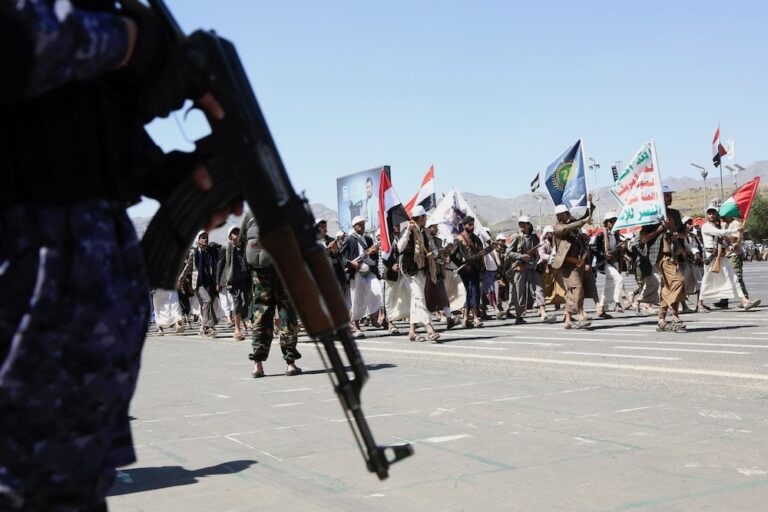The crackdown on journalists comes at a time when belligerents are fighting not only over territory and power, but also for the control of information and how their fellow Yemenis understand the conflict.
This following is an excerpt from a 14 August 2015 CPJ blog post by Jason Stern, CPJ’s Middle East and North Africa Research Associate.
In March 2014, Sana’a University media student Hisham al-Yousifi stood next to Dar al-Hajar, a royal palace built on the precipice of a rock formation just outside the capital, and announced to the video camera, “Here, there are a lot of tourists!” But there were no tourists, just his friends barely failing to hold back their giggling as they pretended to be Europeans visiting the extraordinary historic site.
A year later, Al-Yousifi would be arrested by pro-Houthi forces along with eight other journalists and activists, all taken together from the same hotel in Sana’a.
According to numerous friends and colleagues of the detainees, no one knows exactly where they are held or if they face any charges. But all agree the arrests on June 9 were the most prominent example of how journalists and activists in Yemen are being detained in record numbers by the rebel Ansar Allah movement (commonly known as the Houthis) and their allies now in control of much of Yemen. Meanwhile, an unprecedented number of journalists have been killed in recent months as a result of bombing by the Saudi-led coalition fighting the Houthis and, separately, the targeting of journalists by Al-Qaeda in the Arabian Peninsula.
Read the full story on CPJ’s site here.



